
How to Use GY-BME280 3V3: Examples, Pinouts, and Specs
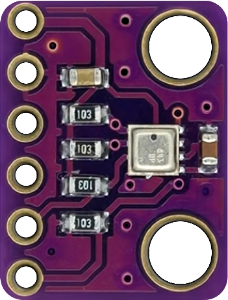
 Design with GY-BME280 3V3 in Cirkit Designer
Design with GY-BME280 3V3 in Cirkit DesignerIntroduction
The GY-BME280 3V3 is a compact digital sensor module designed for measuring temperature, humidity, and atmospheric pressure. Manufactured in China, this versatile sensor operates at 3.3V and supports both I2C and SPI communication protocols, making it an excellent choice for environmental monitoring applications. Its high precision and low power consumption make it ideal for use in weather stations, IoT devices, HVAC systems, and altitude measurement projects.
Explore Projects Built with GY-BME280 3V3
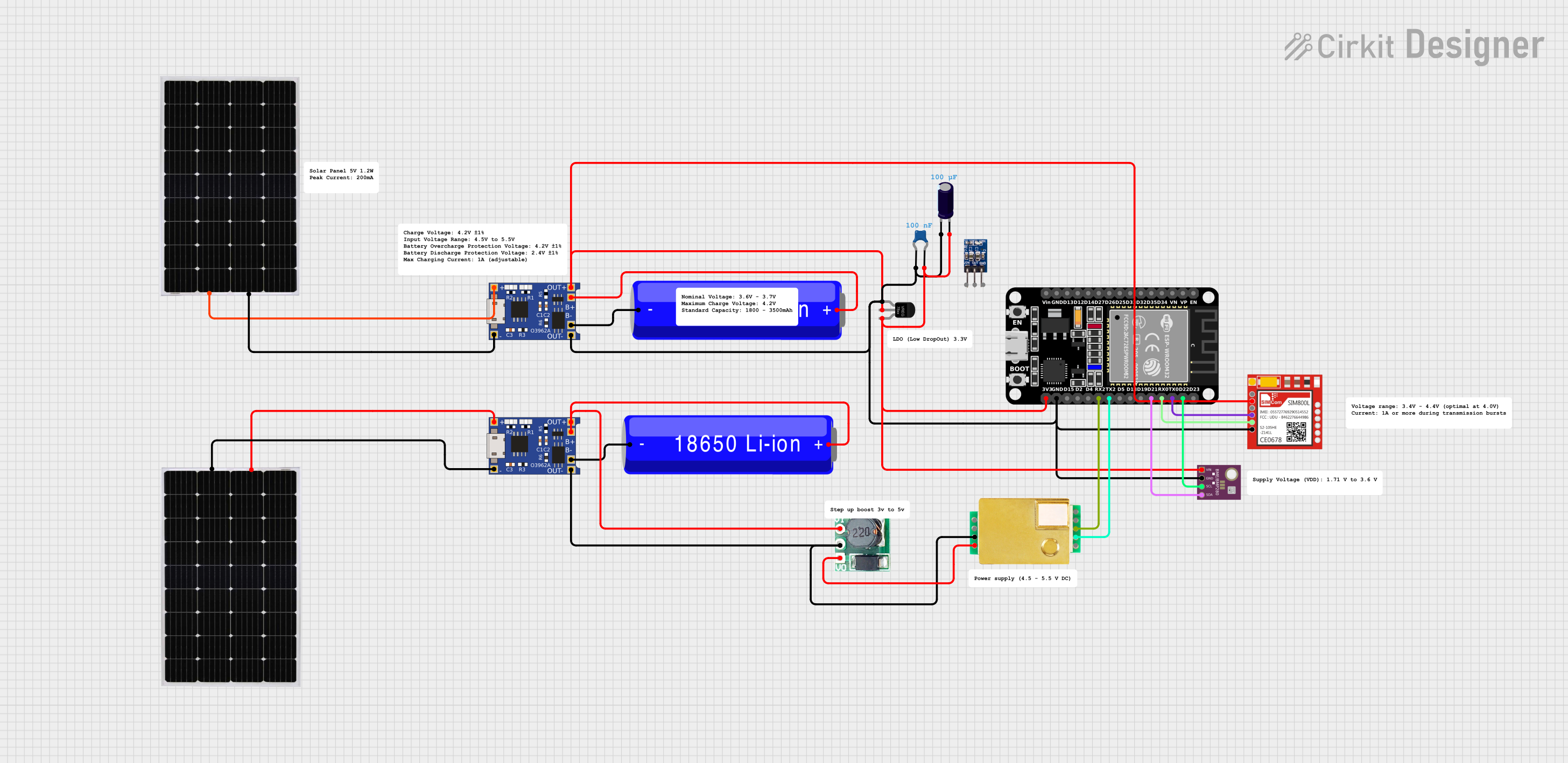
 Open Project in Cirkit Designer
Open Project in Cirkit Designer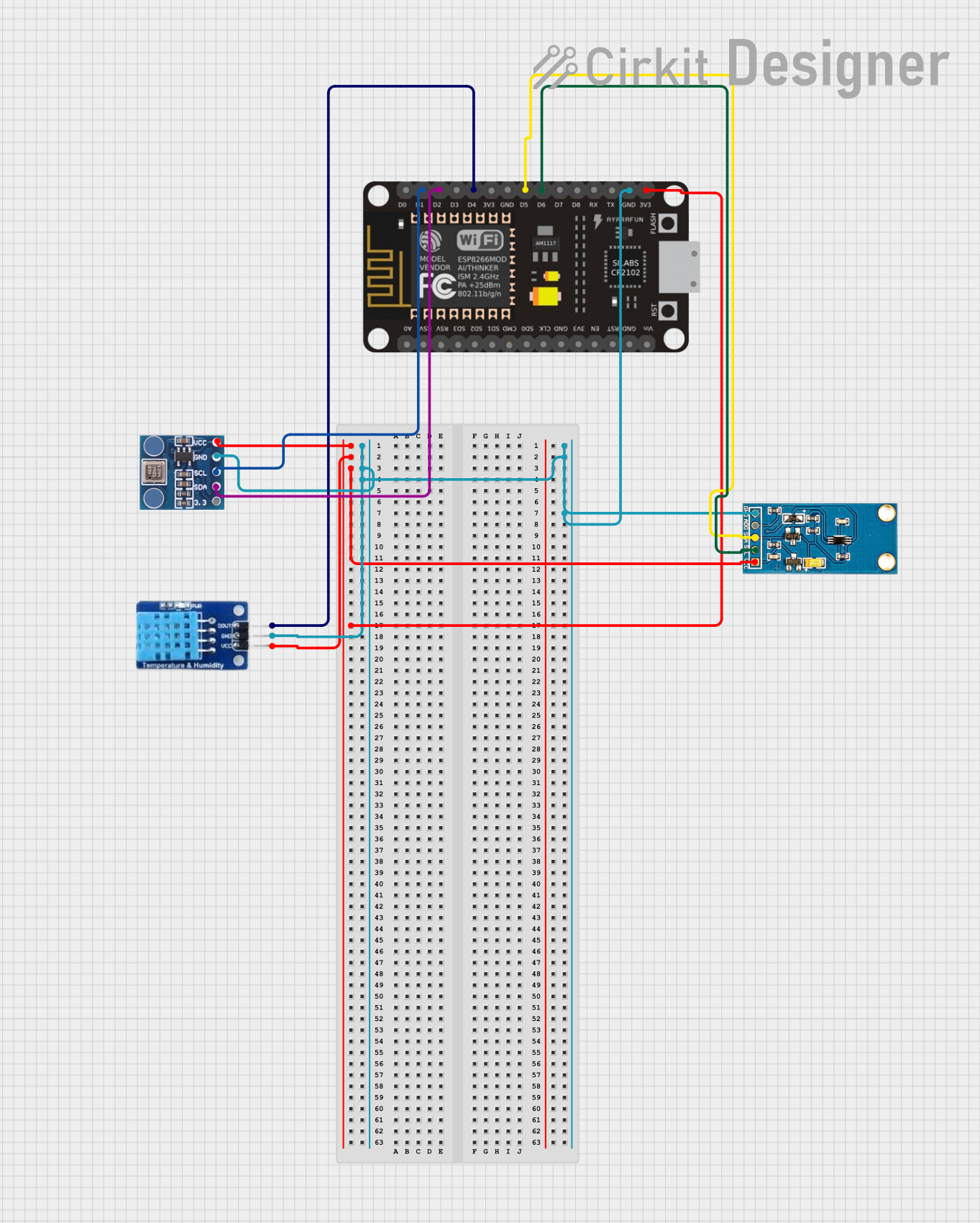
 Open Project in Cirkit Designer
Open Project in Cirkit Designer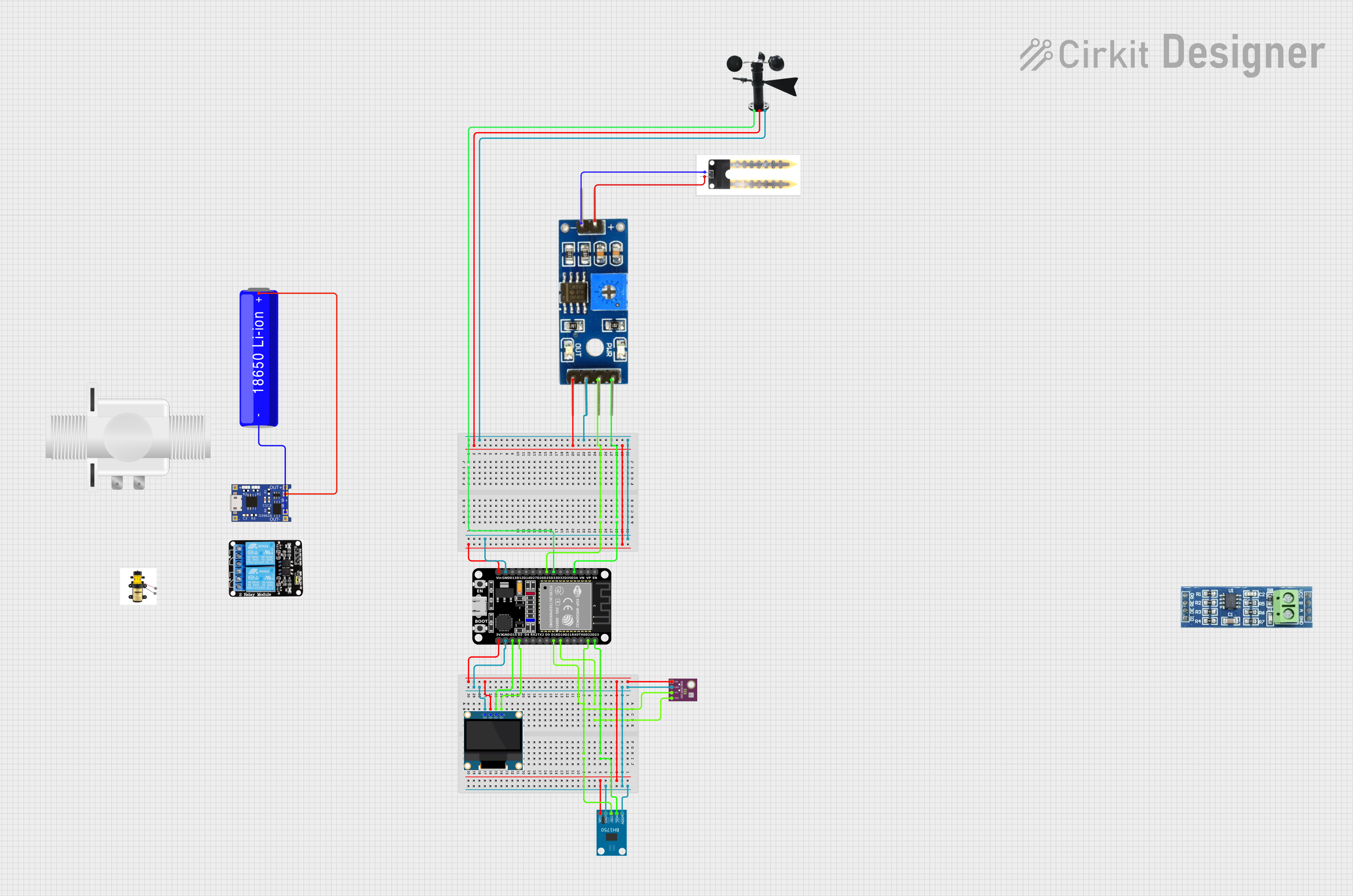
 Open Project in Cirkit Designer
Open Project in Cirkit Designer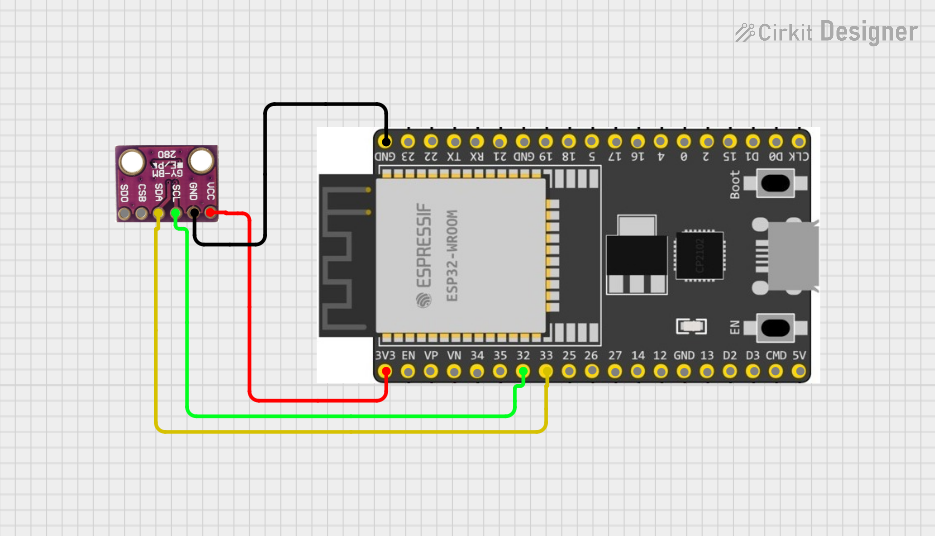
 Open Project in Cirkit Designer
Open Project in Cirkit DesignerExplore Projects Built with GY-BME280 3V3

 Open Project in Cirkit Designer
Open Project in Cirkit Designer
 Open Project in Cirkit Designer
Open Project in Cirkit Designer
 Open Project in Cirkit Designer
Open Project in Cirkit Designer
 Open Project in Cirkit Designer
Open Project in Cirkit DesignerCommon Applications
- Weather monitoring systems
- Internet of Things (IoT) devices
- Altitude measurement in drones and GPS systems
- HVAC (Heating, Ventilation, and Air Conditioning) control
- Environmental data logging
Technical Specifications
The GY-BME280 3V3 module is built around the Bosch BME280 sensor and includes additional circuitry for easy integration into projects. Below are the key technical details:
| Parameter | Value |
|---|---|
| Operating Voltage | 3.3V |
| Communication Protocols | I2C, SPI |
| Temperature Range | -40°C to +85°C |
| Temperature Accuracy | ±1.0°C |
| Humidity Range | 0% to 100% |
| Humidity Accuracy | ±3% RH |
| Pressure Range | 300 hPa to 1100 hPa |
| Pressure Accuracy | ±1 hPa |
| Power Consumption | 3.6 µA (in sleep mode) |
| Dimensions | 15mm x 13mm x 2.5mm |
Pin Configuration
The GY-BME280 3V3 module has 6 pins, as described in the table below:
| Pin | Name | Description |
|---|---|---|
| 1 | VIN | Power input (3.3V). Supplies power to the module. |
| 2 | GND | Ground. Connect to the ground of your circuit. |
| 3 | SCL | Serial Clock Line for I2C communication. |
| 4 | SDA | Serial Data Line for I2C communication. |
| 5 | CS | Chip Select. Used for SPI communication. Pull high or low depending on the mode. |
| 6 | SDO | Serial Data Output. Used for SPI communication. |
Usage Instructions
The GY-BME280 3V3 is easy to integrate into a variety of projects. Below are the steps to use it in a circuit:
Connecting the GY-BME280 to an Arduino UNO (I2C Mode)
Wiring: Connect the module to the Arduino UNO as follows:
VIN→ 3.3V pin on the ArduinoGND→ GND pin on the ArduinoSCL→ A5 (I2C clock line on Arduino UNO)SDA→ A4 (I2C data line on Arduino UNO)- Leave
CSandSDOunconnected for I2C mode.
Install Required Libraries:
- Install the
Adafruit BME280library and its dependency,Adafruit Sensor, from the Arduino Library Manager.
- Install the
Upload Example Code: Use the following code to read temperature, humidity, and pressure data from the sensor:
#include <Wire.h> #include <Adafruit_Sensor.h> #include <Adafruit_BME280.h> // Create an instance of the BME280 sensor Adafruit_BME280 bme; void setup() { Serial.begin(9600); while (!Serial); // Wait for the serial monitor to open // Initialize the BME280 sensor if (!bme.begin(0x76)) { // 0x76 is the default I2C address for the GY-BME280 Serial.println("Could not find a valid BME280 sensor, check wiring!"); while (1); } } void loop() { // Read and print temperature, humidity, and pressure Serial.print("Temperature = "); Serial.print(bme.readTemperature()); Serial.println(" °C"); Serial.print("Humidity = "); Serial.print(bme.readHumidity()); Serial.println(" %"); Serial.print("Pressure = "); Serial.print(bme.readPressure() / 100.0F); // Convert Pa to hPa Serial.println(" hPa"); Serial.println(); delay(2000); // Wait 2 seconds before the next reading }
Important Considerations
- Voltage Compatibility: The GY-BME280 operates at 3.3V. Do not connect it directly to 5V systems without a level shifter.
- I2C Address: The default I2C address is
0x76. If there are address conflicts, you can change it to0x77by pulling theSDOpin high. - Pull-Up Resistors: The module includes onboard pull-up resistors for I2C lines. If you experience communication issues, ensure no additional pull-ups are interfering.
Troubleshooting and FAQs
Common Issues
Sensor Not Detected:
- Cause: Incorrect wiring or I2C address mismatch.
- Solution: Double-check the connections and ensure the correct I2C address (
0x76or0x77) is used in the code.
Incorrect Readings:
- Cause: Environmental factors such as condensation or rapid temperature changes.
- Solution: Place the sensor in a stable environment and avoid exposing it to water or extreme conditions.
Communication Errors:
- Cause: Voltage mismatch or loose connections.
- Solution: Ensure the module is powered with 3.3V and all connections are secure.
FAQs
Q1: Can I use the GY-BME280 with a 5V microcontroller?
A1: Yes, but you must use a logic level shifter to convert the 5V signals to 3.3V to avoid damaging the sensor.
Q2: How do I switch between I2C and SPI modes?
A2: For I2C mode, leave the CS pin unconnected. For SPI mode, connect the CS pin to the appropriate control signal and configure the SDO pin.
Q3: What is the maximum cable length for I2C communication?
A3: The maximum length depends on the pull-up resistor values and the I2C clock speed. For most applications, keep the cable length under 1 meter to ensure reliable communication.
By following this documentation, you can effectively integrate the GY-BME280 3V3 into your projects and troubleshoot common issues with ease.